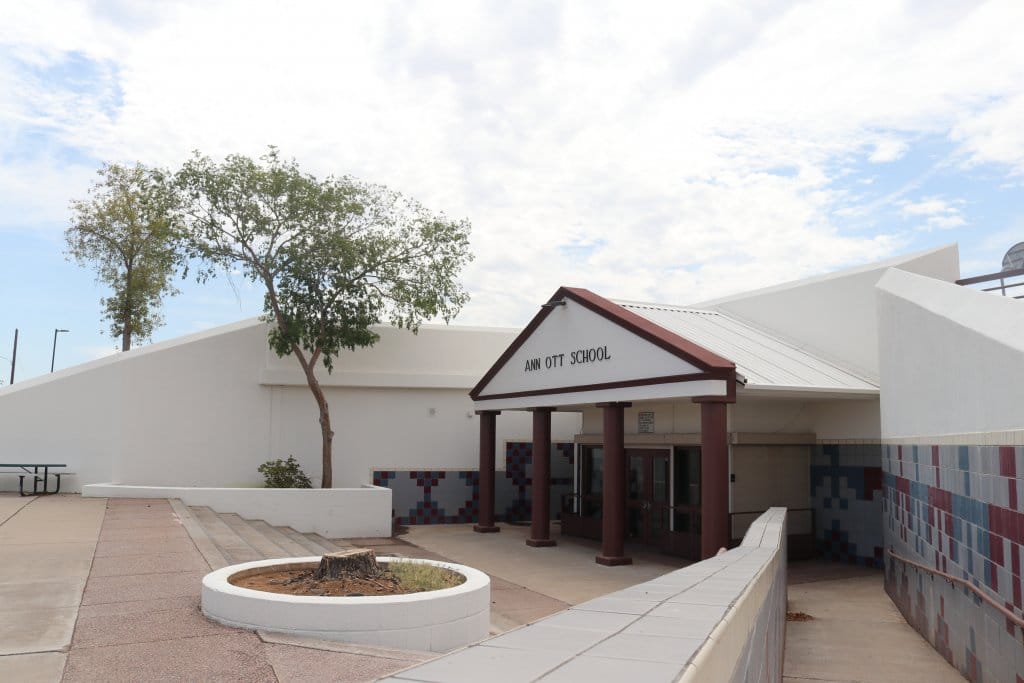The former Ann Ott School in central Phoenix will be the city’s first shelter for migrants released from federal custody, managed privately by the International Rescue Committee of Phoenix, a non-profit refugee resettlement agency. The migrants arriving there are in transit to other parts of the country, where they’ll meet relatives or friends to begin their immigration cases. || Photo by Laura Gómez | Arizona Mirror
By Daniel Gonzalez. || The Arizona Republic
The Welcome Center in Phoenix over the past three years has fed and housed tens of thousands of asylum seekers who have been released from the custody of federal immigration authorities after traveling through Mexico and entering the U.S. through the southern border.
Located in a former elementary school near downtown, the Welcome Center has received more than 46,000 migrants this year alone, among them single adults and families with children from 94 different countries, speaking 55 languages, said Beth Strano, who oversees the operation for the International Rescue Committee.
In recent weeks, the center has been receiving about 200 asylum seekers daily, Strano said.
Strano anticipates that the number of migrants released at the center could increase significantly, perhaps by double, after Dec. 21, the date the Biden administration is scheduled to end under court order a Trump-era border policy known as Title 42 used to quickly expel many asylum seekers, ostensibly to prevent the spread of COVID-19.
The majority leave within a day, headed to other states by plane or on buses to reunite with relatives living elsewhere in the U.S., Strano said.
But the timing will create additional challenges during the holidays, when bus stations and airports are already packed, Strano said. That means migrants may have to stay in shelters longer awaiting flights, and bus tickets, which will require even more resources to feed, house and transport them, she said.
Because the policy has been unevenly applied for various reasons, asylum seekers from some countries, notably Cuba, Nicaragua and Peru, generally have continued to be allowed to enter the U.S. while those from other countries, mainly Mexico, Guatemala, El Salvador, Honduras and more recently Venezuela, have been quickly expelled.
But once Title 42 is terminated, the legal pathway to apply for asylum will reopen to asylum seekers from all countries, including an estimated 44,000 migrants living in often squalid and dangerous conditions in camps and shelters in border cities on the Mexican side waiting for the policy to end.








